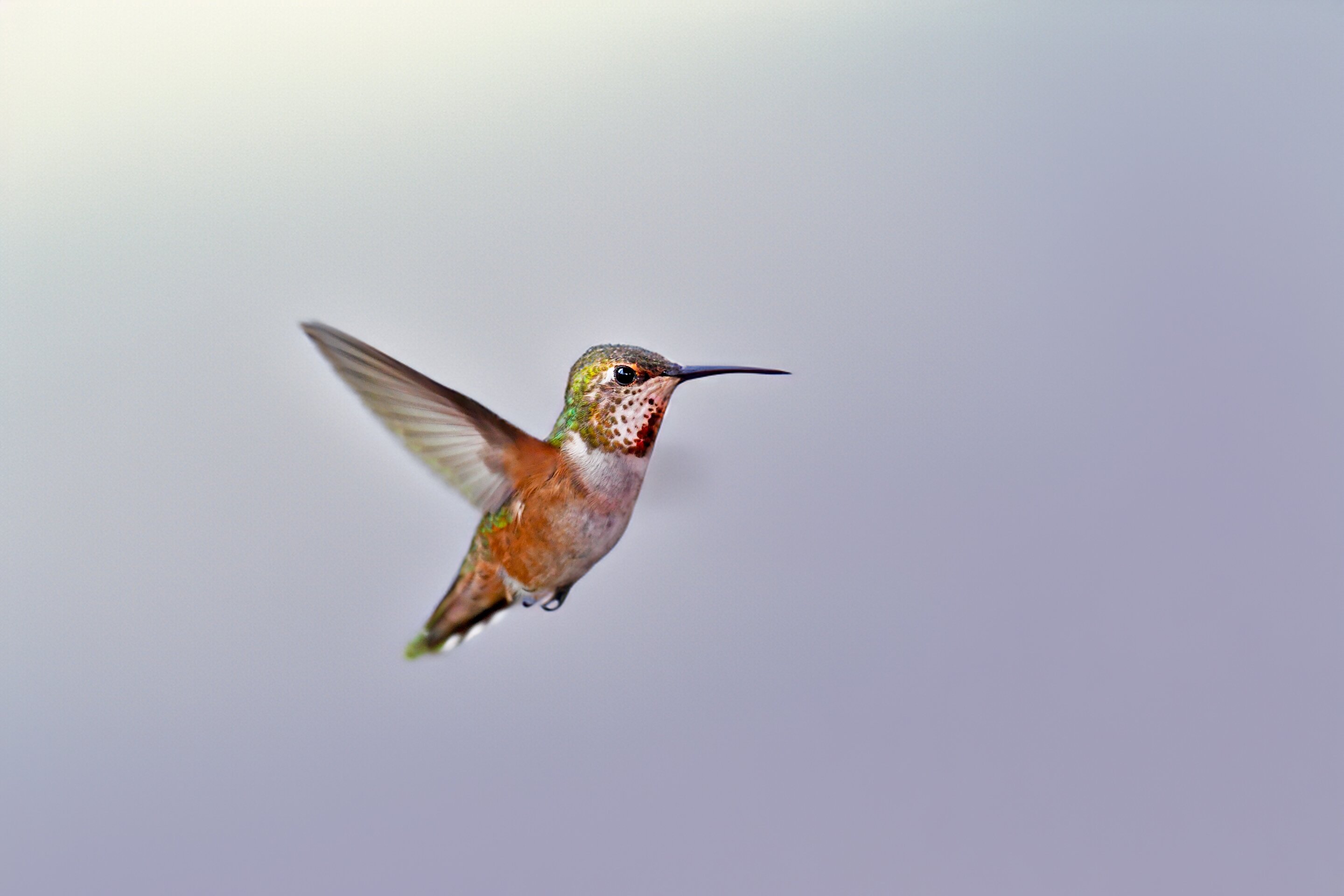Hummingbirds seem like a marvel of nature and engineering: a living creature that can hover near a flower with surgical precision. How do they do this?
Though hummingbirds‘ flight mechanics have been well studied, far less is known about how their sense of touch helps these tiny, energetic birds sip nectar from a flower without bumping into it. Most of what scientists know about how touch is processed in the brain comes from studies on mammals, but bird brains are very different from mammal brains.
UCLA-led research published in Current Biology shows that hummingbirds create a 3D map of their body when neurons in two specific spots of the forebrain fire—as gusts of air touch feathers on the leading edge of their wings and skin of their legs.
Receptors on their bill, face and head also work toward this end. The air pressure’s intensity, influenced by factors including proximity to an object, is picked up by nerve cells at the base of the feathers and in the leg skin and transmitted to the brain, which gauges the body’s orientation relative to an object.
An animation showing the two regions of the hummingbird forebrain that process touch. One region processes touch to the head and face, and the other processes touch to the rest of the body. This allows the hummingbird create a 3D map of its body that helps it orient itself in space during flight. Credit: Gaede et.al. 2024
Zebra finches, also studied by the researchers, have the same general organization with slightly less sensitivity in some areas than hummingbirds, suggesting that these areas help with highly specialized hummingbird flight dynamics. The work adds to knowledge of how animals perceive and navigate in their worlds and can help identify ways to treat them more humanely.
Humans produce a tactile map of the body that progresses from the toes at the center of the brain, down to the legs, back and a much larger area that represents touch to the face and hands. These areas, used for touching and touch tasks, are enlarged in the human brain.
“In mammals, we know that touch is processed across the outer surface of the forebrain in the cortex,” said Duncan Leitch, corresponding author and a professor of integrative biology at UCLA.
“But birds have a brain without a layered cortex structure, so it was a wide-open question how touch is represented in their brains. We showed exactly where different kinds of touch activate specific neurons in these regions and how touch is organized in their forebrains.”
Previous studies in which birds were injected with dye showed their brains have one region in the forebrain to process touch to the face and head, and one for touch anywhere else on the body. In owls, for example, touch centers that typically correspond to face touch are devoted solely to talons. But since hummingbirds live very different lives than owls, it didn’t seem likely this would hold true for them.
Leitch and co-authors at Royal Veterinary College and the University of British Columbia were able to observe neurons firing in real time by placing electrodes on hummingbirds and finches, and touching them gently with cotton swabs or puffs of air. A computer amplified the signals from the electrodes and converted them to sound for easier analysis.
The experiments confirmed that touch for the head and body is mapped in different regions of the forebrain and showed for the first time that air pressure activates specific clusters of neurons in these regions. Examination of the wings showed a network of nerve cells that likely sent a signal to the brain when activated by puffs of air on the feathers.
The researchers found particularly large clusters of brain cells that reacted to stimulation of the edges of wings, which they think help the birds adjust flight in a nuanced way. They also discovered that the feet are acutely sensitive to touch and this touch had a large representation in the brain, presumably to help with perching.
The researchers speculate these areas may be even larger in parrots and other birds that use their feet to grasp and move objects.
In their study, the researchers identified receptive fields on the birds, in which a touch would trigger a neuron to fire. In hummingbirds, some of these fields—especially on the bill, face and head—were very small, meaning they could sense the lightest touch. Zebra finches had the same but larger receptive fields, suggesting these regions in finches are not quite as sensitive and probably of greater relevance to hummingbirds that rely on constant, steady precision flight.
“Hummingbirds were often reacting to the slightest thresholds we could give them,” Leitch said.
Learning more about how diverse animals map touch across their body could lead to advances in technologies that use sensors to move about or perform a task, such as prosthetic limbs or autonomous devices. But improvements to animal welfare are perhaps a more immediate outcome of the research.
“If we can understand how animals perceive their sense of touch, we can develop practices that are less disturbing to them,” Leitch said.
Citations:
Variations in touch representation in the hummingbird and zebra finch forebrain, Current Biology (2024). DOI: 10.1016/j.cub.2024.04.081. www.cell.com/current-biology/f … 0960-9822(24)00595-5. Journal information: Current Biology.
This article by University of California, Los Angeles was first published by Phys.org on 29 May 2024. Lead Image: A juvenile male rufous hummingbird (Selasphorus rufus). Credit: Duncan Leitch.
What you can do
Help to save wildlife by donating as little as $1 – It only takes a minute.

Leave a Reply